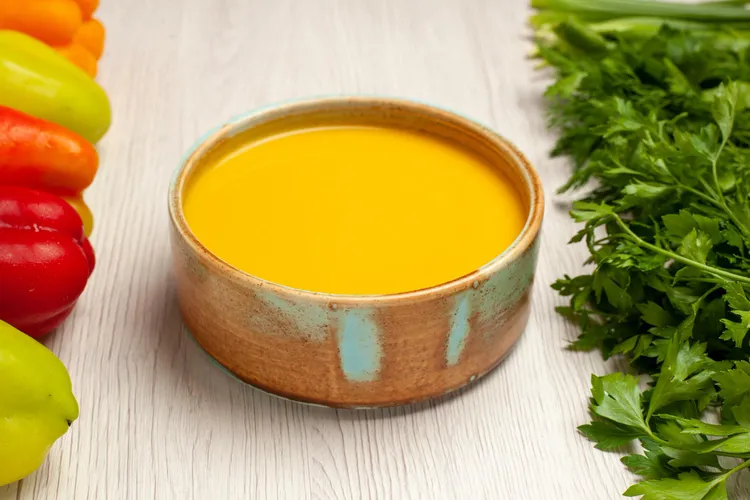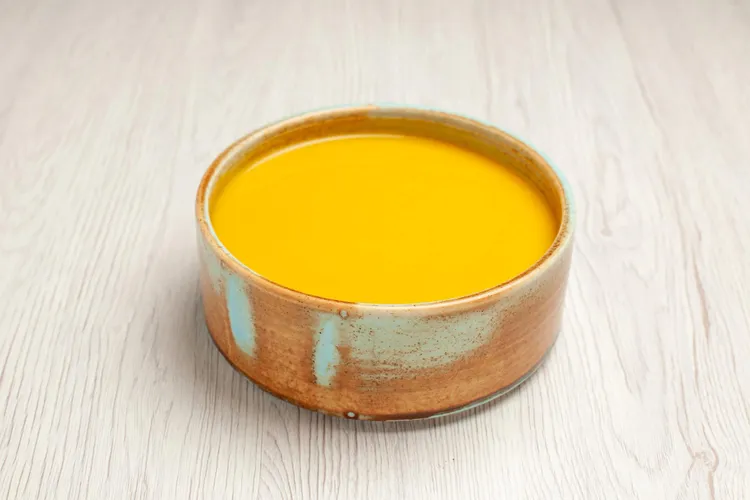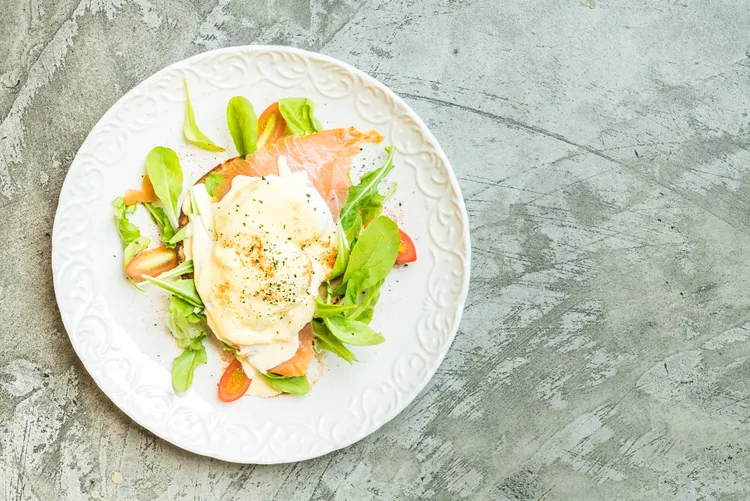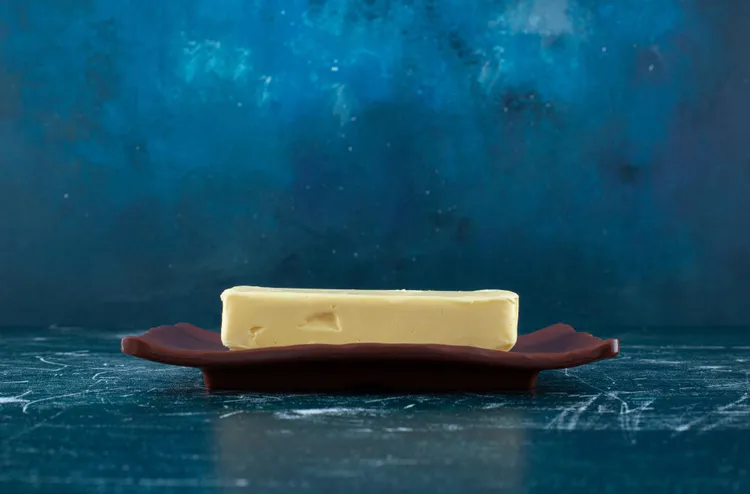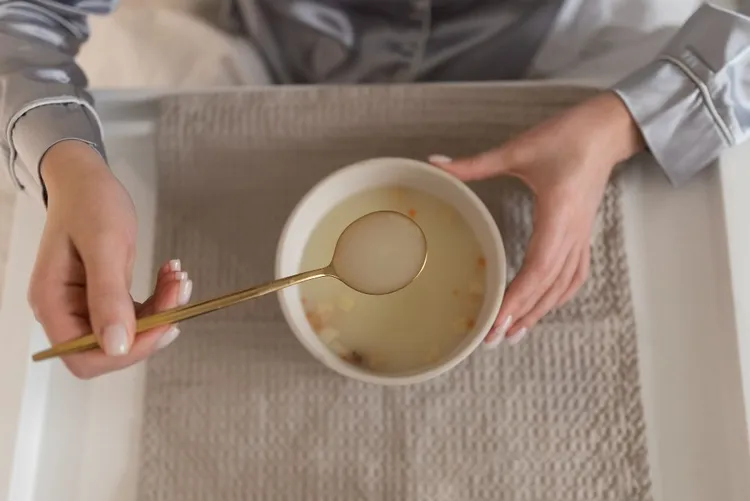How to Make Any Sauce From Scratch: The 5 Mother Sauces Explained
If you’ve ever wished you could whip up a silky gravy, a dreamy cheese sauce, or a perfect pasta sauce without a recipe - this guide is for you. Learning to make sauces is one of the most empowering skills a home cook (or nutrition-loving foodie!) can master. And the secret to sauce-making confidence comes from understanding the five French mother sauces.
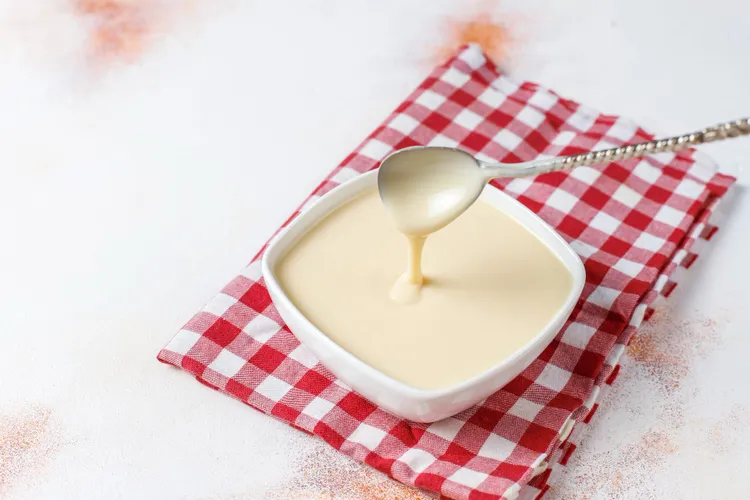
Today, we’re taking a welcoming, step-by-step dive into the 5 mother sauces, how each one works, how to build variations, and how to use them to create practically any sauce you can think of.
Let’s get cooking!
What Are the Five Mother Sauces?
First defined by chef Auguste Escoffier, the five classic mother sauces are:
Béchamel - the creamy white sauce
Velouté - a silky stock-based white sauce
Espagnole - rich brown sauce
Tomato Sauce - the original classical French version
Hollandaise - the luxurious butter-egg emulsion
Each mother sauce has its own structure, thickening method, and purpose. Once you know them, you can create hundreds of daughter sauces with tiny adjustments.
1. Béchamel: The Creamy, Comforting White Sauce
Béchamel is simply butter + flour + milk, cooked into a smooth, velvety sauce.
If you’ve ever made:
Mac and cheese
Alfredo
Creamy spinach
Breakfast gravy
Cheese sauce
You’ve used a béchamel base!
How It Works
The butter and flour cook together to form a roux, which thickens the milk into creamy magic.
Ingredients
Butter
Flour
Milk (or plant milk)
Salt, white pepper
Nutmeg (optional but classic)
How to Make It
Melt butter in a pan.
Whisk in flour; cook 1–2 minutes.
Slowly add milk while whisking.
Simmer gently until thickened.
Season and enjoy.
Nutrition Tip
Use:
Low-fat milk or unsweetened plant milk
Olive oil instead of butter for a lighter version
Fresh herbs to reduce sodium
Daughter Sauces (What You Can Make Next!)
Mornay → add cheese
Cream Sauce → add cream
Cheddar Sauce → for mac and cheese
Mustard Sauce → great with chicken or pork
Soubise → add onions
2. Velouté: The Silky Stock-Based Sauce
Velouté is a lighter, more delicate cousin of béchamel, made by combining white roux + stock instead of milk.
It’s the foundation for:
Chicken gravy
White wine sauce
Mushroom sauce
Seafood sauces
How It Works
Flour and fat create a roux, and the stock transforms it into a smooth, glossy base.
Ingredients
Butter
Flour
Chicken, vegetable, or fish stock
Salt & pepper
How to Make It
Cook equal parts butter and flour.
Whisk in warm stock.
Simmer until thickened.
Adjust seasoning.
Nutrition Tip
You can make velouté incredibly healthy by:
Using homemade low-sodium broth
Reducing added fat
Adding blended veggies for nutrients and body
Daughter Sauces
Supreme Sauce → add cream + mushrooms
White Wine Sauce → add wine + lemon
Sauce Aurore → add tomato purée
Seafood Sauce → made with fish stock
3. Espagnole: The Deep, Savory Brown Sauce
Espagnole is the most complex of the five - rich, dark, and intensely flavorful. It’s built from brown roux + brown stock + aromatics + tomatoes, simmered into a deep, meaty sauce.
This sauce later evolves into the famous Demi-Glace, the base for luxurious restaurant-level sauces.
How It Works
The secret to Espagnole is layering:
Browned bones or stock
Brown roux
Mirepoix (onion, carrot, celery)
Tomato paste
Long simmer
Ingredients
Butter or fat
Flour
Brown beef or veal stock
Tomato paste
Mirepoix
Herbs
How to Make It
Make a brown roux (cook flour + fat until chestnut-colored).
Add mirepoix and tomato paste; caramelize.
Gradually add brown stock.
Simmer for 1–2 hours.
Strain.
Nutrition Tip
To lighten Espagnole:
Use mushroom broth instead of beef
Add pureed roasted vegetables for depth
Reduce salt; boost herbs
Daughter Sauces
Demi-Glace → reduced Espagnole + stock
Bordelaise → wine + shallots
Chasseur → mushrooms + wine
Au Poivre → peppercorn sauce
Robert Sauce → mustard + onions
4. Tomato Sauce: Rich, Bright, and Flavor-Packed
While Italian-style tomato sauce is famous, the mother-sauce version is French: a slow-simmered sauce with tomatoes, vegetables, stock, and sometimes pork.
Modern tomato sauces are more diverse, but the technique remains timeless.
How It Works
Tomatoes soften as they simmer, releasing pectin that naturally thickens the sauce.
Ingredients
Tomatoes (whole, crushed, or fresh)
Onion, garlic
Olive oil
Herbs
Stock or wine (optional)
How to Make It
Sauté garlic, onion, and herbs.
Add tomatoes + stock or wine.
Simmer gently 30-60 minutes.
Adjust seasoning.
Nutrition Tip
Tomatoes are rich in lycopene, an antioxidant that increases with heat - so long simmers are great for you!
Use olive oil for heart-healthy fats.
Daughter Sauces
Marinara → quick-cooked version
Creole Sauce → spicy + vegetables
Spaghetti Sauce → add herbs + meat
Arrabbiata → chili flakes
Bolognese → with meat and milk
5. Hollandaise: The Queen of Brunch
Hollandaise is an egg yolk + butter + acid emulsion - creamy, rich, and luxurious. It’s the most delicate mother sauce, but also one of the most magical.
If you’ve had:
Eggs Benedict
Steamed asparagus with sauce
Lemon butter sauce
You’ve met hollandaise.
How It Works
Egg yolks are whisked over gentle heat with acid (usually lemon or vinegar) until thickened, then warm butter is slowly streamed in.
Ingredients
Egg yolks
Butter
Lemon juice or vinegar
Salt & cayenne
How to Make It
Whisk yolks + acid over gentle heat.
Slowly drizzle in melted butter.
Whisk until creamy and glossy.
Season to taste.
Nutrition Tip
Lighten hollandaise by using:
Ghee instead of butter (better for digestion)
Half butter + half Greek yogurt (a great hack!)
More lemon for brightness
Daughter Sauces
Béarnaise → tarragon + wine reduction
Mousseline → whipped cream added
Maltaise → orange zest + juice
How to Use the Mother Sauces in Everyday Cooking
You can use these sauces to:
Create pasta sauces
Make healthy homemade gravies
Dress vegetables
Glaze proteins
Build casseroles
Top eggs, rice, potatoes, or fish
Create global flavor sauces (just switch spices!)
A Simple Formula for Making Any Sauce From Scratch
Once you understand the mother sauces, all sauces follow this pattern:
Base (milk, stock, butter, tomatoes, wine)
Thickener (roux, reduction, yolks, puree)
Aromatics (onion, garlic, herbs, spices)
Seasoning (salt, pepper, acid)
Finishing elements (cheese, cream, herbs, butter, citrus)
If you memorize that, you’ll never be stuck in the kitchen wondering how to “fix” dinner again.
Learning the five mother sauces is like learning the alphabet of cooking. Once you know the basics, you can express yourself in endless delicious ways. These sauces bring comfort, nourishment, and creativity to your kitchen - and they connect you to centuries of culinary tradition.
Whether you’re cooking for one, feeding your family, or hosting friends, sauces make food feel special.



